August 9 – 11, 2011
Part 14.2 – Ottawa, the museum tour
The Capital Infocentre is the place to go to find out about museums and tours in the national capital region. The sheet printed for this summer lists 16 different possibilities. We chose to visit the Canadian Museum of Civilization.
Situated on the Ottowa River, on the opposite side to Parliament Hill, the museum occupies a huge area. The building on the left, with the Canadian flag on the front is the public visitors museum building. The building on the right is the curatorial building, where they store and catalog all the artifacts deemed worthy of keeping on the complex.
We decided to walk over to the museum via the Alexandra Bridge. The bridge was designed for cars, pedestrians, and bicycles. It is an important link between the Provinces of Ontario and Quebec. Once you cross the bridge, you feel like you are in another world because Quebec is predominantly French and the buildings and language all reflect that heritage. The museum has everything printed in English and French.
The Grand Hall focuses on the lives of the Aboriginal peoples from the West coast of Canada. Huge totem poles, from many different tribes, grace the open, two story salon. The colors and diversities of carvings are really amazing works of art, separate styles unique to each tribe. The Grand Hall has the largest number of indoor totems in the world.
While there are many original, very old, native peoples artifacts, the museum also contains pieces of modern art dedicated to the First Peoples, as they are sometimes referred. This sculpture is dedicated to the aboriginal heritage of the Haida Gwaii region of the Queen Charlotte Islands in British Columbia. The canoe's occupants depict the variety of the natural heritage of the area and the interdependency amongst all of them for survival. The image of this sculpture appears on the reverse of the Canadian twenty-dollar bill.
Many of the tribes of First Peoples used color in their art and clothing. Some of the clothing artifacts were richly decorated with fascinating, intricate beadwork. The First Peoples, with their knowledge of the remote wooded areas and skilled hunting techniques, were important sources for hides sought after by white traders and often traded the hides for beads.
As more whites began expanding into their homelands, the First Peoples culture started to change. Much like for the native American Indians, the changes pushed on the First Peoples were not welcomed. The statement above sums up how many of them felt. The museum has made wonderful efforts to preserve and explain their original customs, art, and lifestyles so today's citizens will understand how much the First Peoples really contributed to the growth of Canada.
One whole floor of the museum takes you through an interactive walk from the time the Vikings settled on the Atlantic Coast in the year 800. Fishing and whaling provided livelihoods to early settlers after the Vikings arrivals up until the 1700's. Traders and hunters helped expand the central regions. Around 1800 the French and American Loyalists took part in expansion enterprises and rebellions. The invention of the railroad benefited Canadians the same as it did Americans, by allowing populations to move westward into the Canadian prairies. Wheat became king, and immigrants flocked to farm the fields and set up shops. One display is a recreation of an Ukrainian store and print shop. Visit a Chinese hand laundry. West communities didn't start developing until the first part of the 20th century, where enterprising people developed the commercial fishing trade, inventing important fish processing and canning machines for safely preserving the riches of the Pacific Ocean. The walk ends at a modern airport where you can check arrival and departure information to visit other areas of Canada.
This modern sculpture, a stylized version of an Orca, merits its own area in the museum, a quiet salon, where you can sit and relax between exhibits. We of FLUKE, our own whale, found it exceptionally fascinating.
We were really beat after touring the museum, but we still had a long walk ahead of us back across the Alexandra Bridge. You can see my two crewmates in the pedestrian section of the bridge. Notice the other two lanes designated for the two-way bike traffic. The colorful flags on the bridge depict scenes from all the provinces of Canada. The Chateau Laurier looms in the distance – talk about a room with a view!
Once again, it was close to feeding time, and the whole crew was tired and hungry. Back to FLUKE to eat and get rested for a big day touring the rest of the city in the morning.
Sunday, September 04, 2011
Subscribe to:
Post Comments (Atom)
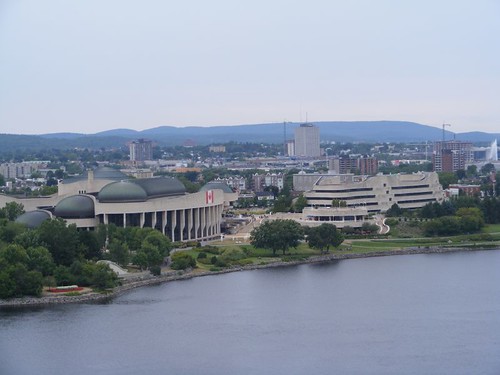
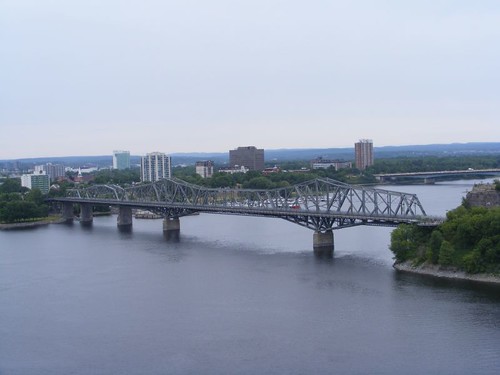
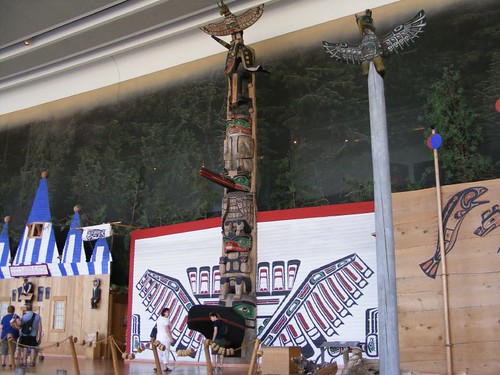
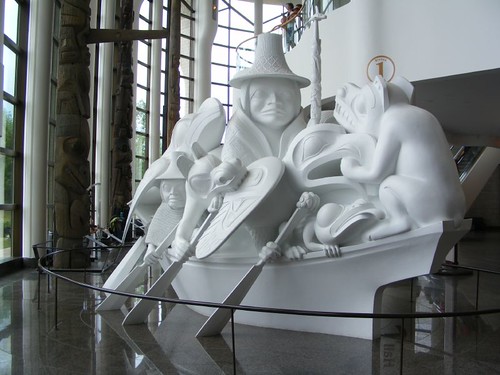

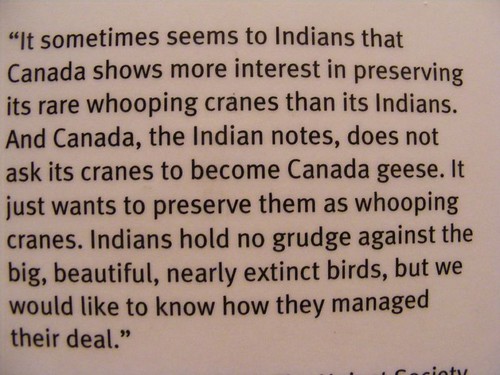
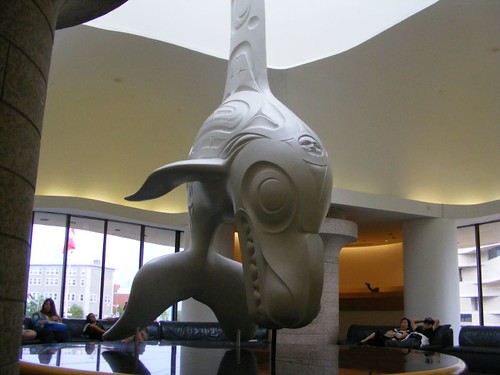
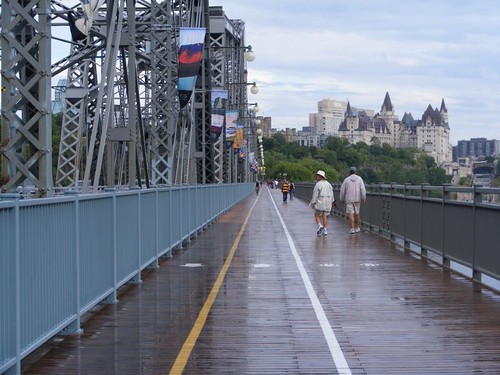








0 comments:
Post a Comment